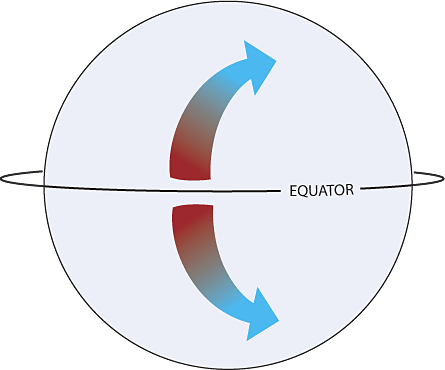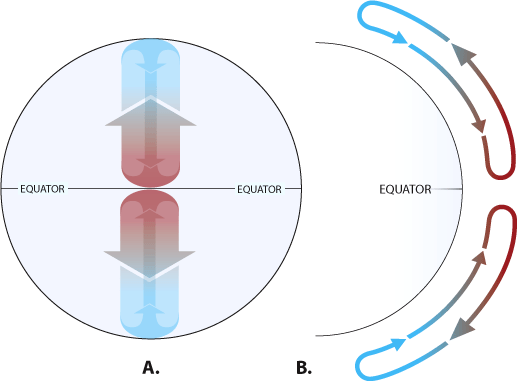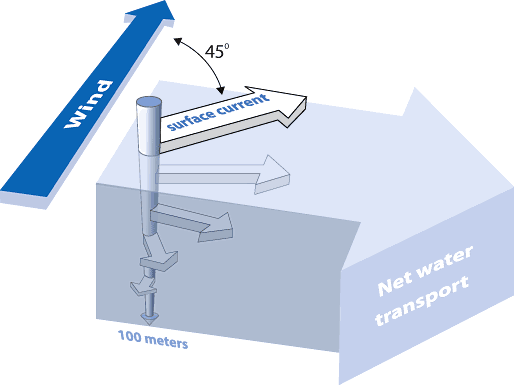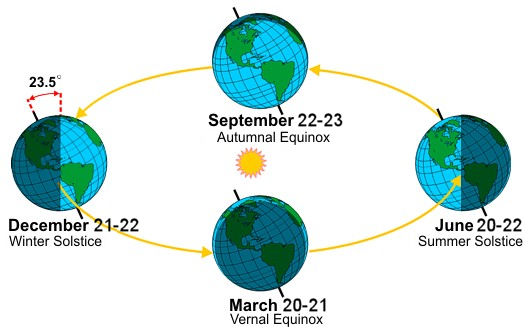The Sailor’s Physics Notebook
A growing collection of curious and useful physics principles
To truly understand wind, currents, and sailing itself, we need to look beneath the surface, into the physics that drives it all. This post is meant to be a growing reference guide. A place you can come back to whenever a physics term pops up that you’re not familiar with. Think of it as your “lookup notebook” for all things motion and mechanics at sea. Welcome to physics: where everything is theoretical until your coffee spills.
Coriolis Force
The Coriolis force is an apparent force that arises in rotating reference frames, like Earth. It’s not a real force acting on objects, but a result of observing motion from a rotating system. Mathematically, in a rotating frame like Earth, any moving object appears to experience a sideways acceleration: F⃗Coriolis=−2m(Ω⃗×v⃗), where Ω⃗ is Earth’s angular velocity vector (rotation), v⃗ is the velocity of the object (relative to Earth), m is the object’s mass.
The Coriolis force is what makes moving things like wind or water curve when they move over a spinning object such as the Earth. To understand this, imagine standing on a merry-go-round. You're at the outer edge, which is moving the fastest because it has the longest path to complete in each rotation. If you now walk straight toward the center of the record at holding the speed, you will begin to drift sideways, even though you think you're walking straight. This happens because you carry your fast sideways speed from the edge. As you move inward, the parts of the record closer to the center are spinning more slowly. Since you're still moving faster than the surface beneath you, you end up drifting to the side, not because you’re being pushed, but because of the difference in rotational speed. This sideways deflection is what we call the Coriolis force. On Earth, the same thing happens: air and water moving from the equator toward the poles keep their fast eastward motion, but the ground beneath them is moving slower, so they end up deflecting sideways. In the Northern Hemisphere, the deflection is to the right; in the Southern Hemisphere, it's to the left. The Coriolis force is zero at the equator because the component of Earth's rotation that causes deflection depends on latitude, and it increases as you move toward the poles where this effect is strongest. The deflection by the Coriolis Force is called the Coriolis Effect.




Without Coriolis Force:
With Coriolis Force:
Credit: NOAA
Ekman Spiral
Imagine you're stirring a bowl of soup with a spoon. As you drag the spoon across the surface, the top layer of soup moves with it. The motion spreads downward, but each deeper layer moves more slowly because it’s being pulled along by the layer above. This creates a kind of layered, spiraling motion.
In the real ocean, the same layered effect happens, but with one key difference: Earth’s rotation adds the Coriolis effect. While the Coriolis force also acts on the soup in theory, it’s so small at that scale that it’s practically impossible to notice.
When wind blows across the ocean surface, it pushes the top layer of water, causing it to move, but not exactly in the direction of the wind. Because of Earth’s rotation, the Coriolis effect causes this surface water to veer slightly , to the right in the Northern Hemisphere and to the left in the Southern Hemisphere.
The layer of water just below the surface is dragged along by the friction of the layer above it. However, it moves more slowly, just like the soup, and is deflected even further to the side. Each layer below behaves similarly, moving slower and turning more with depth. This creates a spiraling pattern of movement called the Ekman spiral.
When all these layers are combined, the net movement of the water ends up about 90 degrees from the wind’s direction, a process known as Ekman transport. This sideways flow is crucial in driving coastal upwelling, which brings cold, nutrient-rich water from the deep ocean to the surface, fueling rich marine ecosystems.


Credit: NOAA
Equinox
An equinox happens twice a year, around March 20 and September 22, when day and night are nearly the same length all over the world. Equinoxes occur because of Earth’s axial tilt, about 23.5°, and its orbit around the Sun. On the two equinox dates, known as the vernal (March) and autumnal (September) equinoxes, the tilt of the Earth's axis is perpendicular to the Sun’s rays. This causes the Sun to appear directly above the equator, and the terminator line (the boundary between day and night) aligns with Earth’s rotational axis.
As a result, both hemispheres experience nearly 12 hours of daylight and 12 hours of night. These moments also mark the changing of seasons: the March equinox signals the start of spring in the Northern Hemisphere and autumn in the Southern Hemisphere, while the September equinox marks the start of autumn in the Northern Hemisphere and spring in the Southern Hemisphere.


Credit: National Weather Service
